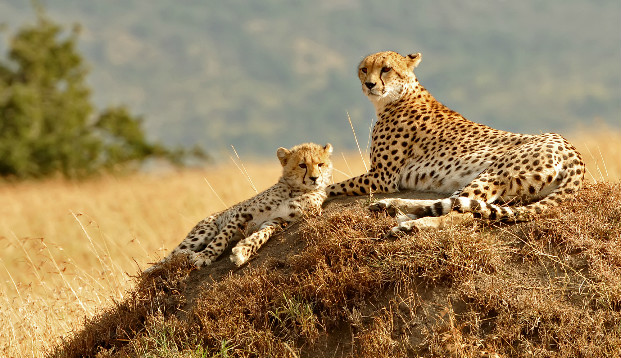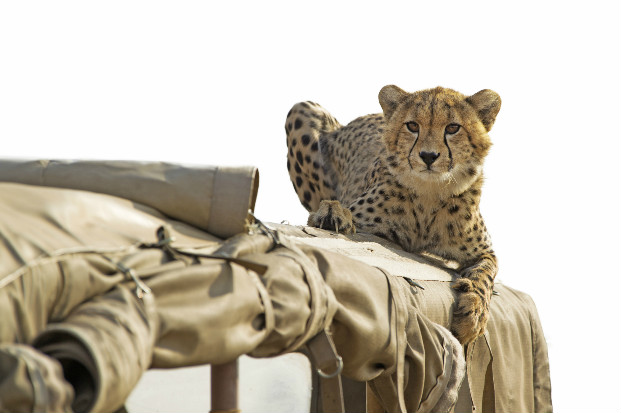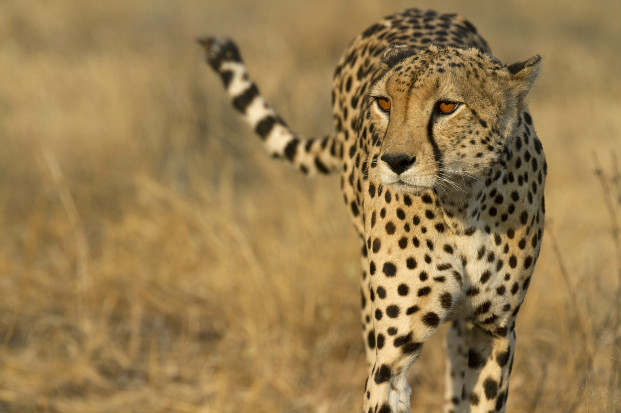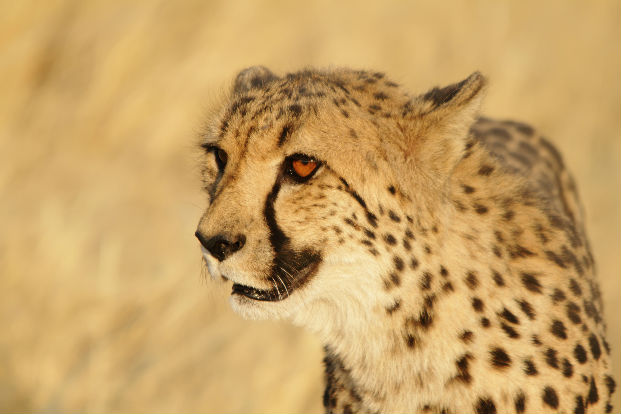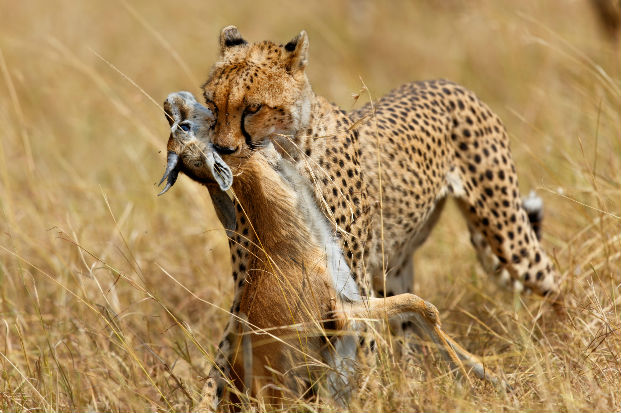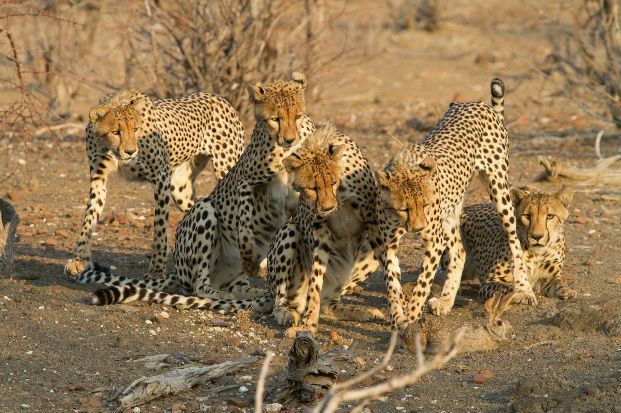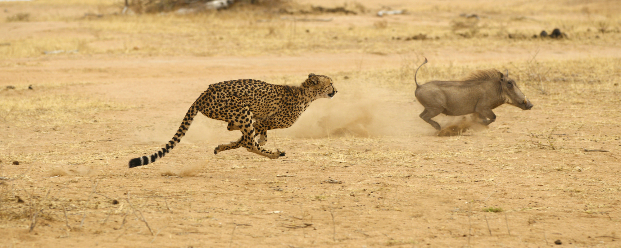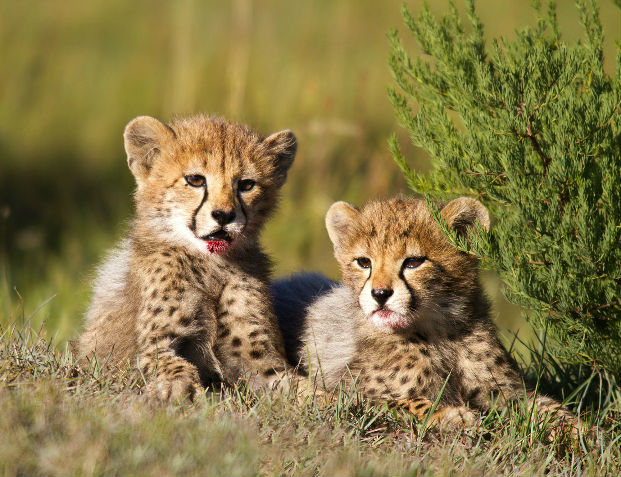Reaching a maximum speed of 70 mph the cheetah is the fastest land mammal. However, for this speed they have sacrificed strength and weapons. As a result they avoid competition with larger predators by hunting during the day where they rely on their cryptic coloration for concealment. Female cheetahs are solitary with the exception of when they are accompanied by their cubs up to 18 months hold. Males on the other hand tend to live as a coalition, usually of brothers. A single recessive gene is responsible for some cheetahs having stripes instead of spots. These animals are known as “king cheetahs” but are not separate species.
Vote for the fact you find most fascinating
When her cubs are just four to six months old a mother will bring back small fawns for her cubs to practice their hunting skills.
A cheetahs claws do not retract into sheaths like other cats. This is an adaptation to aid traction in a similar way to a sprinter’s spikes.
During the chase a cheetah can be off the ground for as much as 50% of the time.
Cheetahs up to the age of twelve weeks sport a line of grey hair down their backs. It is thought that this is to mimic the coloration of the feared honey badger. However, this is still to be proven.
The cheetah’s short nose and wide nostrils allow it to maximise the amount of oxygen taken in during and after the chase.
As cheetahs have evolved to maximise speed they have sacrificed strength and the weapons necessary to defend their prey. As a result they regularly lose their kills to lion, spotted hyena, leopard and even vulture.
The cheetah can reach a speed of 70 mph accelerating to 60 mph in just 3 seconds making it faster than any other mammal.
If a cheetah were to chase its prey any further than 500m it could die as a result of overheating. During a chase the cheetah’s breathing increases to 150 breath’s per minute and its body temperature rises to 40.6 c (105 f).


